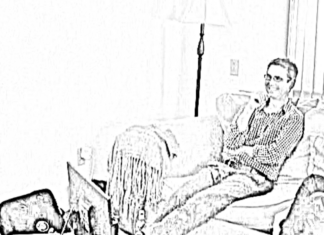Ever wondered what an enlightened person looks like? Probably not what you’ve imagined.
Having gone through rigorous Zen training myself, which left me disillusioned and with ever more questions about what spirituality actually is, I’ve come across Robert Forman’s highly readable book “Enlightenment Ain’t What it’s Cracked up to be”, in which he describes his own spiritual journey with great detail and honesty.
Maybe the most striking element of what he learned during his 42 years of daily meditation is that spiritual experiences don’t have to be those highly publicized, knock-your-socks off encounters with the divine, where the sky opens up and something eternally peaceful and transcendent and enlightened comes down upon (whomever), and filled them with ever lasting love and joy.
That is pretty much what we expect when we talk about enlightenment. But according to Forman, that’s not necessarily what is happening.
Enlightenment looks much more subtle than that. From what I understand, it came to Forman in the form of physical relaxation of his chronically tense neck muscles. It came in the form of brief brakes of his chronic anxiety, which initially lasted a few minutes, and after some years the anxiety was gone. It came in a kind of “wakeful sleep”, what he describes as “even though you’re asleep, something inside remains conscious.”
Most of us expect that our “monkey mind”, the constant chatter of thoughts and emotions, goes completely silent. That is not what happens to Forman. While there are momentary deep meditative states of no thinking, the day to day mindset is not one of permanent tranquility, but rather a calming of the layers of chatter. Thoughts are still present, but they are more linear, less chaotic, and not overwhelming the way they used to be.
The mind will not be permanently laser sharp focused on the present moment, but focused and clear many times with alternating phases of absentmindedness, the frequency of which depending on the level of practice.
The great achievement of this book is the message that there is no perfection when it comes to the human mind. We can try to approach calmness and occasionally feel oneness with others. But it won’t be a permanent state.
The greatest benefit of spiritual practice is simply awareness. The ability to step out of the jumble of egocentric thinking and to look at oneself from the point of view of the witness. As soon as we don’t buy into the fears and illusions we so easily fall prey to we become aware. Awakened. This is the first and most important step.
“I doubt that the path ever ends. It didn’t used to know this”, writes Forman. “We can come pretty close to freedom in several life-domains. But we can always become freer in other areas.”
While Forman reports other, and deeper spiritual experiences of his long journey, he stresses that the enlightened person “bares no outward mark of a holy man.” No halo, no flowing robes, no beards necessary. Just a human body with its propensity for failing.
Relationships too ain’t gonna be perfect. While spiritual beings will strive to better their relationships and live an authentic life, they may not always succeed. He ruthlessly talks about his own marriage: how the fantasies that there may be someone “better” out there, prevent us from being fully present in our actual relationship. “In holding out for the ‘enlightened’ partner, my own aspirations were blocking the very flow I was after. To want what you have and to not want what you don’t have is the beginning of wisdom. When we face our difficulties we realize for the first time the shallowness of our complaints.”
Striving to reach enlightenment is a livelong task. “A transubstantiated consciousness really does change things in quiet and longterm ways”, he concludes. “Indeed this may be the core change. But, and this is the discovery that took so many years, it does not change everything. You can shift your consciousness and still fell anxious or foolish or silly or sad. An existential shift is not a personlity transplant.”


 Gerti Schoen is a psychotherapist for couples and individuals in private practice in NYC and Ridgewood, NJ. Her work has been informed by psychoanalytic thought, Imago Relationship Therapy, Mindfulness, Shamanic healing and Internal Family Systems Therapy. Before becoming a mental health professional, she had a fulfilling career as a journalist and writer in Germany. She has published two books, The Gentle Self and Buddha Betrayed.
Gerti Schoen is a psychotherapist for couples and individuals in private practice in NYC and Ridgewood, NJ. Her work has been informed by psychoanalytic thought, Imago Relationship Therapy, Mindfulness, Shamanic healing and Internal Family Systems Therapy. Before becoming a mental health professional, she had a fulfilling career as a journalist and writer in Germany. She has published two books, The Gentle Self and Buddha Betrayed.


















